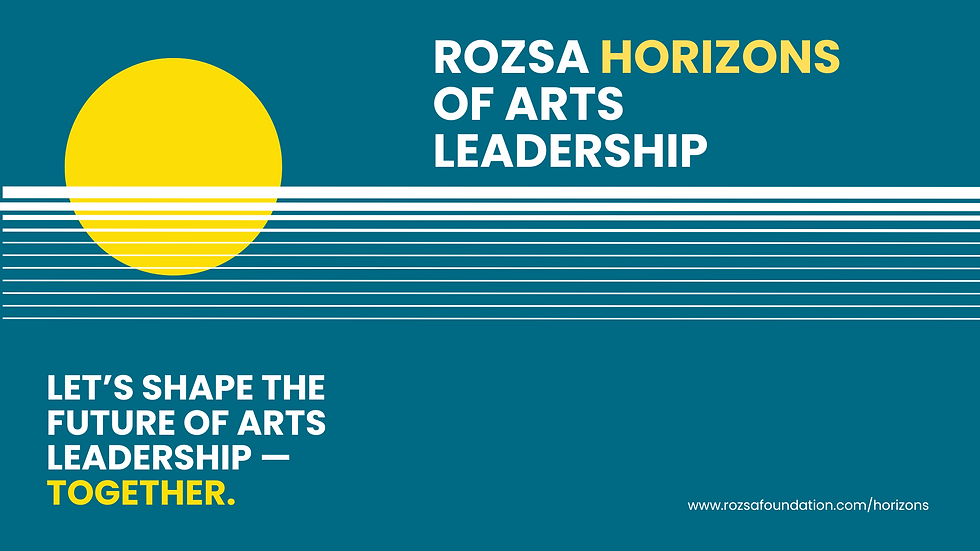Millennials, Are they really that different?
- Rozsa Foundation
- Jul 4, 2019
- 2 min read
Updated: Apr 1, 2021
As a part of our third cohort of the Rozsa Executive Arts Leadership (REAL) program, we challenged our participants to work in pairs to tackle a complex issue facing not only their organization but also the not-for-profit arts sector. Over the next few weeks, we will be sharing some of the work of the participants in the program to challenge, share, and disseminate the great work by the leaders in our programs.
Presented by Christine Armstrong (National Arts Centre Foundation – Board of Directors) and Sara Leishman (Calgary Folk Music Festival)
Arts organizations have tried to engage young patrons through social groups with an emphasis on events, networking and a social scene. Some examples include: CPO’s Club Wolfgang, Glenbow’s Pivot, Business for the Arts’ artsScene, National Ballet’s Turnout, Art Gallery of Ontario AGO Next and the National Arts Centre’s Southam Club. So why do some foster the generation of arts leaders, while others dry up and disappear?
Complex Issue:
How can the arts sector guarantee the sustainability of both its philanthropic and executive leadership as values and experience shift from one generation to the next?
1. Entrench the best and brightest in the value of the arts: “Activate Culture” by: developing a network of peers and mentors, establishing coveted jobs and employers of choice, let them get their hands dirty; meaty work with leadership and responsibility versus coffee runners – let them spread their wings. Extend invites to arts leadership events to those outside of the sector, e.g., small percentage of invites to Canadian Arts Summit be those who simply express interest but are from outside the sector.
2. Mentor young people in philanthropy, board service, as well as careers: Create a national digital network of arts administrators early in their career - things like the Canadian Arts Summit are great, but only available to those senior in their roles, local mentorship networks, speaker series at universities about the legacies left by philanthropists and how they’ve shaped the country (e.g., CPO founders, Human Rights Museum in Winnipeg, etc.), encourage youth to approach boards, not the other way around.
3. Think differently about valuable skill sets: Take calculated risks when hiring executive leaders and engaging board candidates, find new and unconventional skill sets, in emerging fields (e.g., Social Media Influencer, Youth Ambassador, Youth Curator, etc.), ensure they have the support and coaching to also develop the traditional skills of board leaders, executives, etc.
4. Ensure you’re constantly evolving: Regular, organization-wide values check-in, Recognize opportunities to innovate, find ways to pay tribute to your past, while still moving forward, Commit to diversity in executive leadership, board, programming, create learning and sharing opportunities with other organizations in your sector, and take risks!







Comments